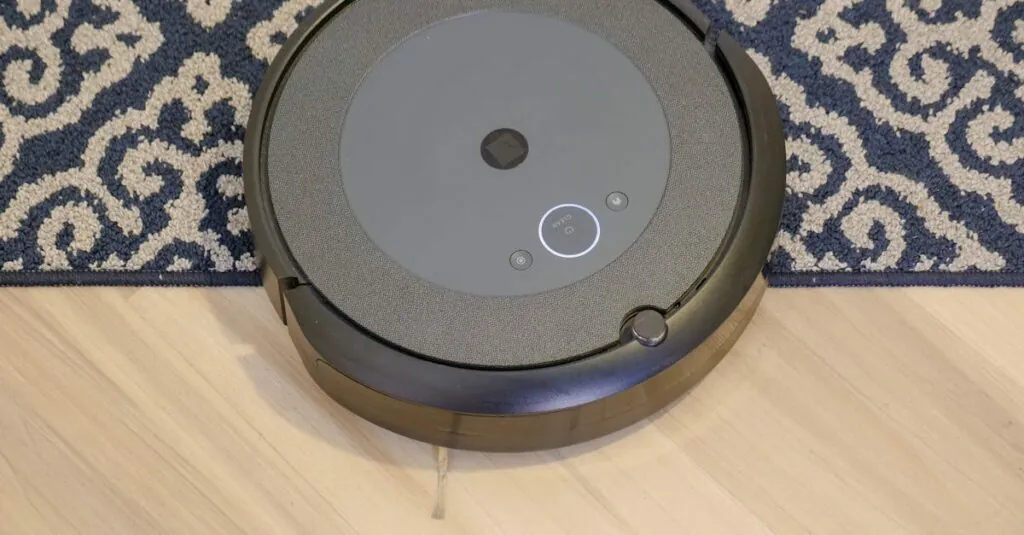Imagine waking up to the gentle hum of a robot brewing your morning coffee while simultaneously adjusting the thermostat to the perfect temperature. In today’s world, smart homes are no longer just a futuristic dream; they’re becoming a reality, thanks to the rise of robotics. These little mechanical marvels are transforming everyday living, making homes not just smarter but also a lot more fun.
From vacuuming floors to managing security systems, robotics in smart homes is like having a personal assistant who never asks for a raise. As technology evolves, the integration of robotics promises to enhance convenience, efficiency, and even a dash of humor in daily routines. So buckle up and get ready to explore how these intelligent machines are changing the way people live, one quirky gadget at a time.
Table of Contents
ToggleOverview of Robotics in Smart Homes
Robotics plays a pivotal role in enhancing the functionality of smart homes. These systems utilize automation to perform tasks that promote convenience and efficiency. Devices like vacuum robots, smart thermostats, and automated lighting systems streamline household chores, allowing occupants to focus on other activities.
Smart home robots often integrate with Internet of Things (IoT) technology, creating a cohesive system that enhances user interaction. For example, smart speakers control various devices through voice commands, offering seamless accessibility. In addition, sensor technology allows robots to adapt to different environments, optimizing their performance.
Security is another essential aspect impacted by robotics. Surveillance robots can monitor properties, alerting homeowners to unusual activities. Many systems enable remote access, providing users the ability to manage security settings from their smartphones.
Energy management also benefits from robotics. Smart thermostats adjust temperature settings based on user behavior, promoting energy efficiency. Homeowners can reduce energy costs while maintaining comfort through these intelligent solutions.
When integrating these technologies, homeowners experience a transformative upgrade in their living spaces. The convenience of automating everyday tasks leads to a more enjoyable and relaxed home environment. Moreover, the fun factor introduces a playful interaction with technology, enhancing the overall living experience.
Numerous manufacturers are actively developing innovative robotic solutions tailored for smart homes. Advances in artificial intelligence drive these innovations, resulting in more intuitive and interactive devices. Keeping up with emerging trends ensures that smart home systems evolve with user needs.
Benefits of Robotics in Smart Homes
Robotics in smart homes offers significant advantages that enhance daily living. Improved security and energy efficiency stand out as critical benefits.
Enhanced Security Features
Robotics enhances home security through smart surveillance systems. These systems utilize cameras and sensors to monitor surroundings continuously. Alarm systems connected to robotic units alert homeowners of unusual activity. Remote access allows users to check their property from anywhere. Surveillance robots patrol designated areas, bolstering safety measures. Integrated artificial intelligence analyzes patterns and triggers alerts when necessary. Homeowners enjoy peace of mind, knowing their automated systems offer protection. The convenience of real-time notifications aids in swift decision-making during emergencies.
Improved Energy Efficiency
Robotic solutions contribute significantly to energy efficiency in households. Smart thermostats adjust heating and cooling based on user patterns and preferences. These devices optimize energy consumption, resulting in lower utility bills. Automated lighting systems adjust brightness according to occupancy and natural light levels. Homeowners can set schedules or preferences to minimize energy waste. Robotic lawnmowers operate autonomously, conserving energy while maintaining home exteriors. Moreover, intelligent appliances track usage metrics, providing users with actionable insights. Analytics help families make informed decisions about their energy consumption. Through these innovations, smart homes promote sustainability and resource conservation.
Types of Robotics Used in Smart Homes
Various types of robotics enhance functionality and convenience in smart homes. These technologies cater to specific tasks, making daily life smoother for residents.
Home Cleaning Robots
Home cleaning robots, such as robotic vacuum cleaners and mops, perform essential cleaning tasks autonomously. These devices navigate through rooms using advanced sensors and mapping technology, ensuring comprehensive coverage of surfaces. They detect obstacles and adjust paths accordingly, preventing collisions. Many models offer app connectivity, enabling users to schedule cleaning sessions remotely or set cleaning zones. Some advanced versions even empty their dustbins, minimizing user involvement in maintenance. The emergence of these robots significantly reduces the time spent on cleaning chores.
Smart Assistants
Smart assistants, often integrated into home devices, facilitate interaction and control of various systems. These voice-activated devices enable users to manage lighting, temperature, and security systems effortlessly. With just voice commands, smart assistants can play music, provide weather updates, and check security camera feeds. They also learn user habits to optimize routines and settings. This adaptive behavior contributes to energy efficiency by adjusting conditions based on preferences. Moreover, smart assistants serve as central hubs for connecting multiple IoT devices, enhancing the overall smart home ecosystem.
Challenges and Limitations
Smart homes powered by robotics face various challenges and limitations that impact their overall effectiveness and user adoption.
Technical and Cost Barriers
High costs often prevent widespread adoption of robotic technologies. Many smart devices require significant initial investment, which deters budget-conscious consumers. Compatibility issues arise when integrating different systems and platforms, complicating user experience. Complex installation processes also discourage users from setting up advanced robotics. Ongoing maintenance costs can add to the overall expense, making it less appealing for many households. Ultimately, the combination of these technical challenges and financial barriers limits the accessibility of robotic solutions in smart homes.
Privacy Concerns
Privacy concerns present significant challenges for users of smart home robotics. Surveillance devices often raise issues about data collection and potential misuse of personal information. Homeowners worry about unauthorized access to their networks and the risk of hacking, given that many smart devices connect to the internet. Additionally, unclear data handling policies by manufacturers further exacerbate these concerns. Trust in the technology diminishes as users consider the implications of constant monitoring by smart devices. Consequently, these privacy challenges hinder the acceptance and integration of robotics into daily life.
Future Trends in Robotics for Smart Homes
The future of robotics in smart homes looks promising with several key trends on the horizon. One significant trend is the advancement of artificial intelligence, allowing robots to learn user habits and preferences better. This capability will enable personalized experiences, adjusting settings automatically based on individual routines.
Another emerging trend involves enhanced interoperability among devices. As manufacturers develop standards for communication, different robotic systems will increasingly work together seamlessly. Integration promotes a cohesive smart home environment where devices share information and optimize functions collectively.
In addition, improvements in robotic mobility and dexterity are expected to enhance household tasks. Robots equipped with advanced sensors and AI will take on more complex roles, such as cooking or even gardening. These developments will reduce the burden of household chores significantly.
Security also stands to benefit from future innovations. Sophisticated surveillance robots will not only monitor homes but also analyze behaviors to detect unusual activities with greater accuracy. This proactive approach to security adds an additional layer of safety for homeowners.
Sustainability in smart homes plays a crucial role moving forward. Emerging robotic solutions will focus on energy conservation and eco-friendly practices. Smart appliances equipped with robotics will provide real-time insights on energy usage, helping users make more sustainable choices.
Finally, as technology continues to evolve, the affordability of robotic solutions is likely to increase. A drop in manufacturing costs combined with competition in the market will lead to broader adoption of robotics in everyday life. Such advancements ensure that smart homes become more accessible for a wider range of consumers, enhancing daily living experiences.
The integration of robotics in smart homes represents a significant leap towards a more efficient and enjoyable living environment. These innovations not only simplify daily tasks but also enhance security and energy efficiency. As technology progresses the future holds exciting possibilities for personalized experiences and improved interoperability among devices.
Addressing current challenges like costs and privacy concerns will be essential for broader acceptance. As solutions emerge and affordability increases more households will embrace the benefits of robotics. The journey towards smarter homes is just beginning and the potential for transformation is immense.





